
The small Turkish town of Kusadasi on the Aegean coast is an ideal place for those who want to combine a beach holiday with research into the ancient history of the region. Sand and pebbles here alternate with the wonders of the ancient world, and legends about saints are intertwined with legends about pirates and their fabulous riches. We tell you how to get there, what to see, where to swim and where to go in the vicinity of Kusadasi.
How to get there
To enter Turkey you will only need a foreign passport. Russians can stay in the country without a visa for up to 60 days, all COVID restrictions have been lifted.
There are no direct flights from Russia to Kusadasi. The easiest way to get there is to fly to the airport of Izmir (distance 100 km) or Bodrum (distance 157 km) and transfer to a regular bus or taxi. Ticket prices from Moscow to Izmir start from 17,500 rubles* one way, to Bodrum – from 16,800 rubles*.
Where to stay
In Kusadasi you can find accommodation for different tastes and budgets. We have selected several options with high ratings.
Guest house Villa Fortin Pension (rating 8.4) – family hotel with a swimming pool and rooms with large balconies. Cost of a night in a room for two from 5,600 rubles*.
Authentic Villa Konak Hotel (rating 8.9) with interesting interior details, cozy common areas and a small pool. Located a stone’s throw from the city museum. Cost of living in a room for two from 6,500 rubles*.
Small LaVista Boutique Hotel & A SPA with a swimming pool and magnificent views of the fortress and the sea (score 9.3) is located 0.7 km from the city center. Cost of a night in a double room from 18,600 rubles*, breakfast included.
Hotel DoubleTree by Hilton Kusadasi (rating 8.8) is a five-star hotel of a famous global chain, located 1.9 km from the center of Kusadasi. Cost of a night in a double room from 27,700 rubles*.
Historical information
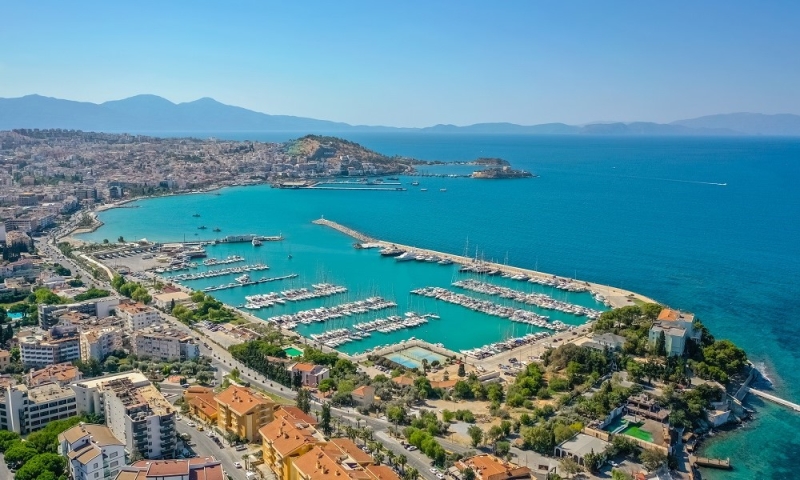
The first ancient Greek settlements in this territory appeared in the 11th century BC. e. In ancient times, the port of Kusadasi was in the shadow of a larger and more famous trading center – Ephesus. At the beginning of the 15th century, the city, which by that time had become an important port of the Venetian and Genoese republics, was captured by the Ottoman Empire. Today Kusadasi is a stopping place for cruise ships, beach and educational tourism.
What to see
Fortress on Pigeon Island
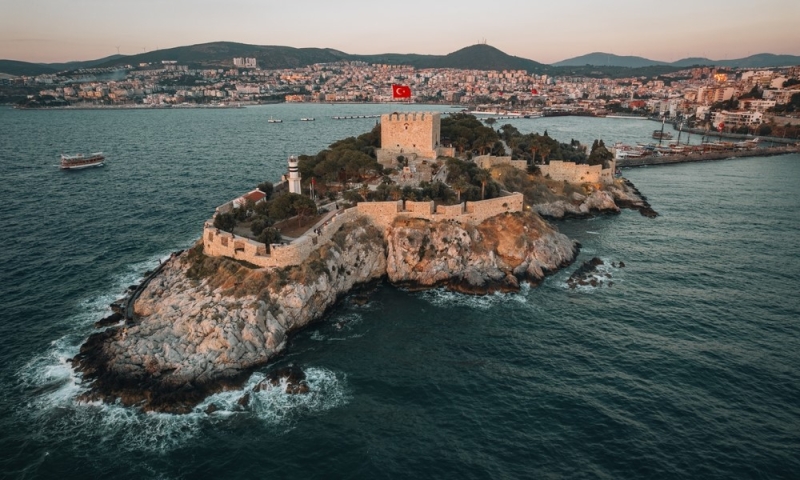
The main attraction and one of the symbols of Kusadasi is a powerful fortress on the island of Guverjinada, which means Dove in Turkish. A 350 m long causeway connects the island with the city, so the fortress can be reached on foot or by pleasure boat. It is believed that the first fortifications on the island were erected by the Genoese in the 13th century to protect the settlement and trade routes from the sea. After the conquest of the port by the Ottomans at the turn of the 15th–16th centuries, under the leadership of the famous Turkish admiral and corsair Khair ad-Din Barbarossa, a fortress that has survived to this day was built. In legends about the formidable pirate, it is often called the Pirate’s Castle – looted wealth was stored here, and captured sailors were sold in the slave markets of Istanbul.
Entrance to the fortress is free, from the walls and loopholes there are excellent views of the turquoise-blue Aegean Sea. Inside there is a small museum exhibition with ship models and the skeleton of an ancient whale. The fortress has walking paths among palm trees and wisteria, and in the evenings the walls are illuminated. Near the dam on the island there is a small beach on pontoons where you can sunbathe and swim. On the side of the embankment on the left near the dam there is a small pebble beach, and on the right there is a pier for excursion ships and a taxi stand.
Ataturk Boulevard
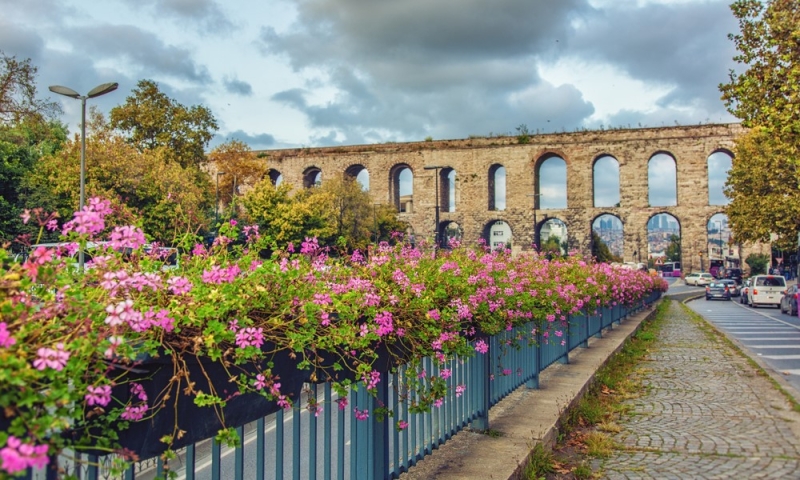
The three-kilometer embankment begins next to the port, not far from the Clock Tower, traditional for Turkish cities. At the pier you can admire the huge ocean liners moored, look at the fish market for freshly caught delicacies and find a funny cat monument with a box of fish. For shopping, head to the Grand Bazaar, reminiscent of Istanbul’s Egyptian market, an indoor shopping pavilion with souvenirs, sweets and textiles.
Nearby is the impressive Caravanserai, built in 1618 – merchants and trade caravans used to find shelter and protection here. Now in the restored building, which more closely resembles a fortified castle, you can relax in the shade of palm trees, sit by the fountain or spend the night in a hotel behind high battlements.
Another symbol of Kusadasi is located in the middle of Ataturk Boulevard – this is a monument to the pigeons, after which the city is named. The sculpture looks like a giant open brush, on which several dark and one white dove sit. The monument looks especially impressive against the backdrop of the sea and hilly shores at sunset. Along the entire embankment you can relax on observation platforms, watch the sunset or have a good time in numerous coffee shops, fish restaurants and bars overlooking the vast sea. The embankment ends with a small sandy beach.
Beaches
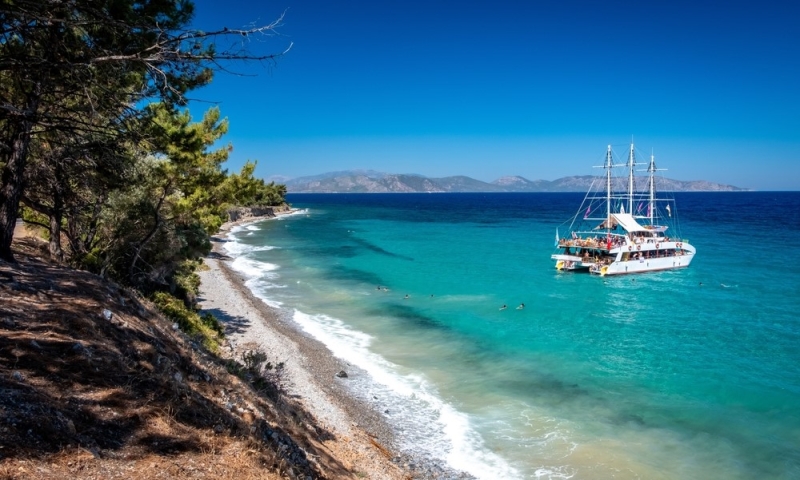
For a peaceful holiday, head away from the port. The best locations are sandy Ladies Beach and Love Beach. There is all the necessary infrastructure; you can sit for a small fee on sun loungers or for free – on your own beds and towels. The entrance to the water is gentle, but in the evening the waves often rise. It is easy to get from the center by city minibus – dolmushka. Another option for swimming in the city is the small Green Beach. Only a small part is available for free, but among the stones on the left you can see fish.
If you want privacy, choose the beaches in the Dilek Peninsula National Park. There are four of them in total: the first is sandy, the rest are mostly pebbly. Most people will be on the pebble beach called Milli Park. The clearest sea from turquoise to deep blue shades, pine trees approaching the very shore, friendly wild boars that you can feed by hand, and the presence of the necessary infrastructure will turn a day on the peninsula into a summer fairy tale. You can get to the park by minibus, which runs once an hour. Entrance fee is about 20 liras (about 75 rubles). The road to the beaches passes through the Cave of Zeus, famous for its underground lake with blue water.
Adaland water park
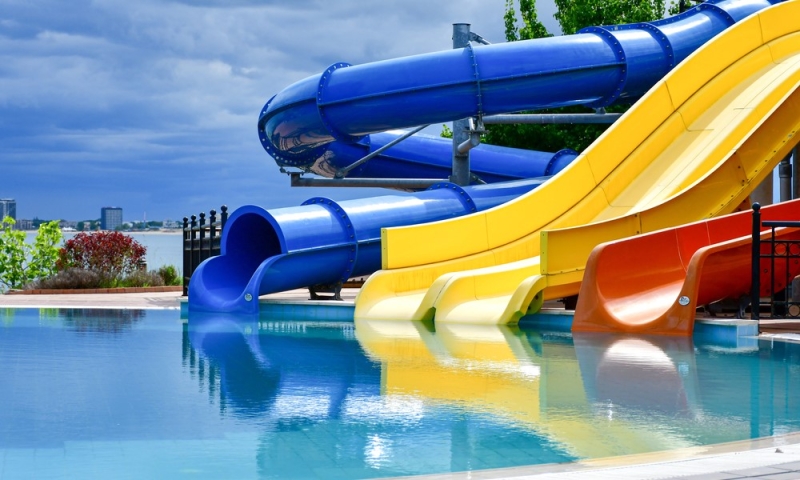
A place for a fun holiday with children: one of the best water parks in Turkey has several levels with many slides, pools and attractions. There is an imitation of rafting on rough water, with lifeguards looking after vacationers. There is a dolphinarium on site: you can not only watch a show with trained animals, but also swim with them. Getting to the water park is easy by minibus from the city center. Children under three years old are admitted free of charge, ticket price for adults is about 2,700 rubles.
What to visit in the area
Ancient city of Ephesus
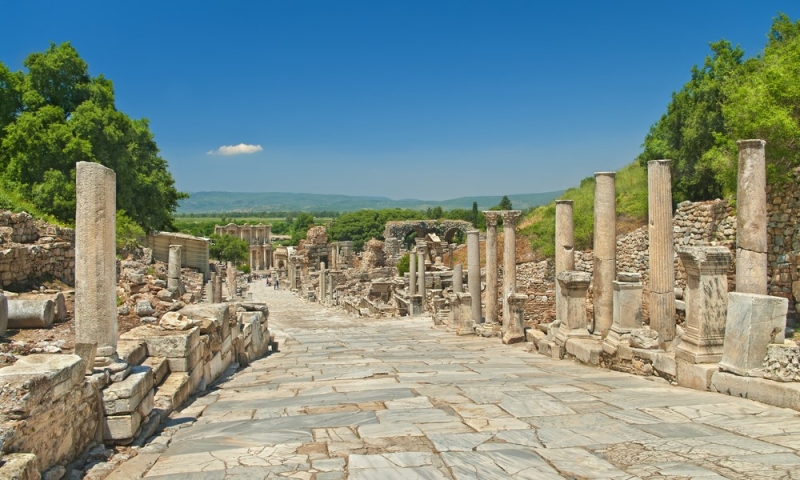
A half-hour drive from Kusadasi, it is worth visiting the ruins of the ancient city of Ephesus, one of the largest metropolises of antiquity. Its history goes back 8,500 years – it is a unique monument of the Hellenistic and Roman eras. Here are the remains of great temples, streets, gates, gymnasiums, a shopping area, theaters, houses with terraces, libraries and baths, which make it possible to travel back to the distant past and revive the lines of school textbooks.
The city became famous thanks to the cult of Artemis: the Ephesian temple in honor of the Greek goddess of the hunt was one of the seven wonders of the ancient world. In 356 BC. it was set on fire by the vain Herostratus, thus preserving his name for centuries. Alexander the Great allocated funds for restoration, and by the beginning of the 3rd century BC. the majestic temple was rebuilt again and existed until the 5th century. It is known that temple columns were used in the construction of Hagia Sophia in Constantinople. Today tourists can see only one reconstructed column on the site of the temple.
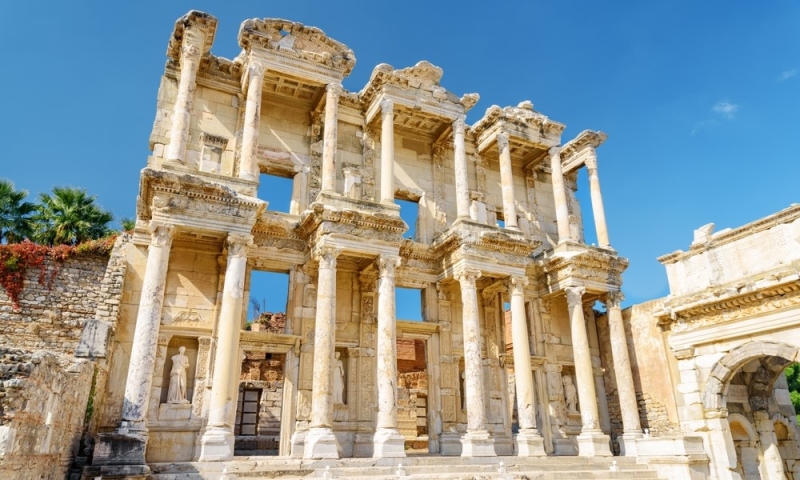
The Library of Celsus is much better preserved, the magnificent façade of which has also been restored to its original form. Built in the 2nd century AD. e., it was considered the largest in the Ancient world after the Library of Alexandria – from 12,000 to 15,000 scrolls were stored here. The theaters are no less impressive – the large one, in the arena of which gladiatorial fights were held, could accommodate 25,000 spectators. Separately, it is necessary to note the preserved houses with terraces – villas of Roman patricians, decorated with mosaics, marble and frescoes.
A ticket to the archaeological park will cost 400 liras (about 1,400 rubles), and for entry to the Ephesus Museum you will have to pay another 100 liras (360 rubles). Additional fees apply for individual properties, such as houses with terraces.
Ephesus is a monument not only to ancient Greek, but also to early Christian history and culture. Not far from the Temple of Artemis you can see the ruins of the Basilica of St. John the Evangelist, built by Emperor Justinian on the burial site of the saint. And 6 km from the ancient city is the House of the Virgin Mary – a chapel in the building where, according to legend, the Virgin Mary lived after the death of her son.
Priene, Miletus and Didim
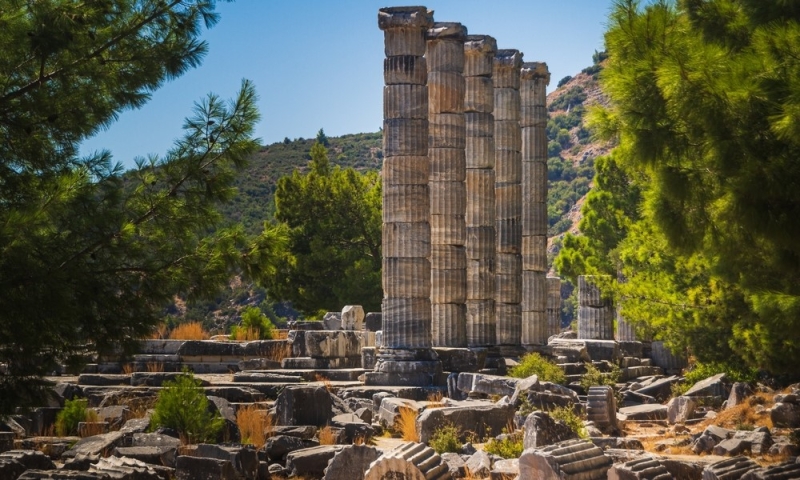
Ancient history buffs will be interested in traveling from Kusadasi to three less popular ancient cities than Ephesus. It is more convenient to travel by rented car or taxi – the distance is about 200 km. Along the way you will see deserted ancient theaters, the Ionic temple of Pallas Athena, the sanctuary of Zeus, the ruins of the house where, according to legend, Alexander the Great stayed, the temple of Apollo, a bas-relief depicting the Gorgon Medusa and many other ancient monuments.
To diversify the route, we recommend that after visiting Priene, visit the secluded village of Doganbey. It’s nice to stroll along the quiet streets among bougainvillea and cypress trees, admiring the cobblestone road and restored stone houses. Don’t forget to stop by the local museum and try the gastronomic specialty – black mulberry juice.
*Prices are current at the time of publication.

